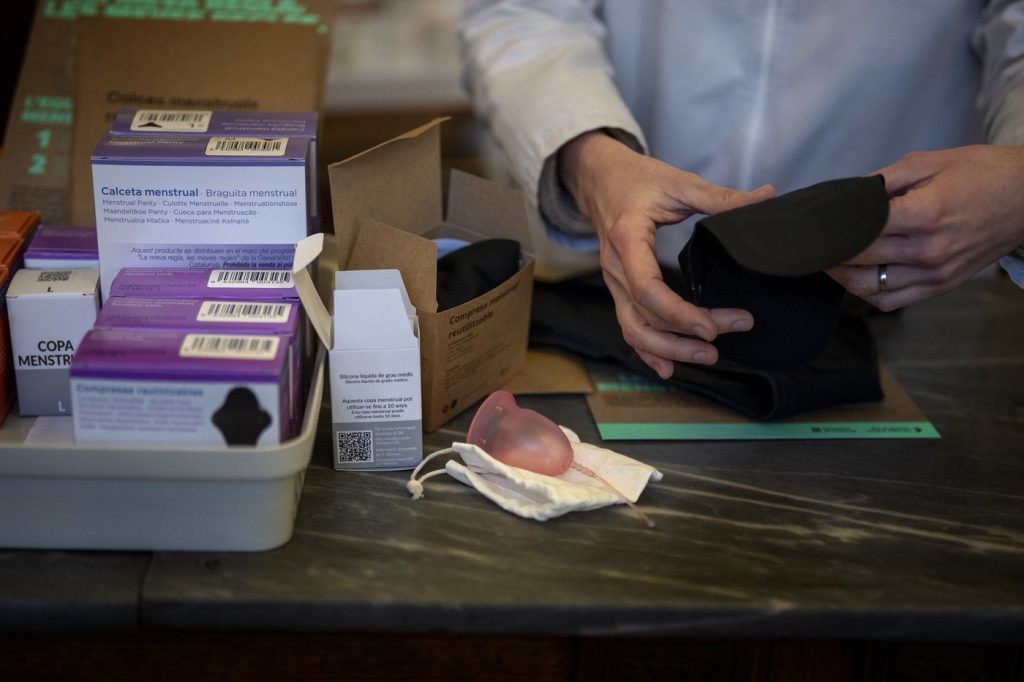Six months ago, Selin Celikoyar decided to switch from traditional disposable menstrual products to a reusable menstrual disc. She expressed concerns about tampons from both environmental and biological perspectives, noting their wastefulness and expense. The rising popularity of reusable menstrual products, such as discs, silicone cups, and period underwear, offers alternatives to the billions of single-use pads and tampons that end up in landfills every year. These alternatives are more cost-effective in the long run, can be reused for years, and help in reducing waste. Women's health experts have observed a growing interest in these options, particularly since the pandemic when many individuals felt more comfortable exploring different products at home.
Celikoyar had used tampons and pads for many years, influenced by the options she grew up with. However, after seeing a friend make the switch to a menstrual disc, she decided to try it herself, finding the experience to be transformative. This shift is noteworthy as around 12 billion disposable pads and 7 billion tampons are discarded in U.S. landfills annually, according to Dr. Luwam Semere, chief of obstetrics and gynecology at Kaiser Permanente Santa Clara. The materials used in pads are largely plastic, which can take up to 800 years to degrade in landfills, as stated by the National Institutes of Health.
The prevalent use of single-use products is primarily due to tradition rather than their effectiveness, according to Dr. Navya Mysore, a primary care physician in New York City. She explained that many young women are introduced to menstrual hygiene based on what their mothers or grandmothers used, often leading to a reliance on traditional products.
Menstrual cups are among the most popular reusable options and are inserted similarly to tampons. Menstrual discs, however, are placed further inside the body and do not disturb sexual activity. Both options can hold significantly more than a tampon and can remain inserted for up to 12 hours, unlike the recommended four to eight hours for tampons. Dr. Semere noted that the risk of Toxic Shock Syndrome, a condition associated with tampons, is also much lower when using menstrual cups or discs. However, both products require some technique for insertion, which may initially be challenging and can lead to messiness. Regular cleaning with soap and water is necessary, and users may find this inconvenient in public restrooms. Additionally, there is a risk of dislodging an intrauterine device if a user removes a menstrual cup without breaking the suction seal.
Though these products can present challenges, Celikoyar believes the advantages outweigh the drawbacks. For her, the longer time between changes has allowed her to handle situations like attending back-to-back concerts and red-eye flights without worry. She highlighted the overall ease of use that modern menstrual products offer compared to traditional methods.
The cost of menstrual cups and discs typically ranges between $15 and $40, varying in shape and size, and can be purchased online or at pharmacies and big box stores. Experts suggest that trying different types may be ideal to find the best fit, but experimenting can become costly. Reusable products can ultimately lead to significant savings over time; Celikoyar estimated her previous usage of three tampons daily for seven days, totaling about 20 tampons per month. Given that tampons can cost between 20 to 25 cents each, transitioning to a reusable product might lead to financial breakeven after just a few months.
For those who prefer pads, the most common reusable alternative is period underwear, which functions like regular underwear with added absorbent lining. While these are beneficial for reducing irritation caused by disposable pads, they share a drawback similar to traditional pads: users cannot easily tell when they need to be changed. As a result, some patients may choose to use period underwear in conjunction with cups, discs, or tampons, allowing for a customized approach based on flow intensity and personal preferences.












